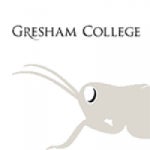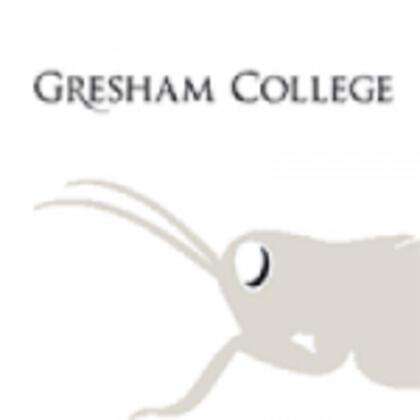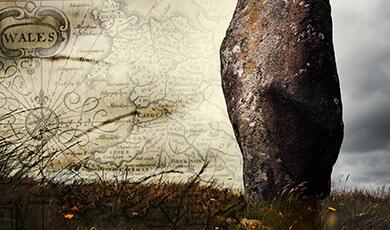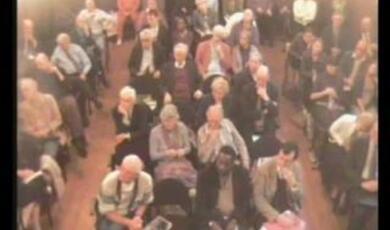London’s Ecology - Managing for biodiversity in London's Royal Parks
Share
- Details
- Transcript
- Audio
- Downloads
- Extra Reading
Dr Nigel Reeve, Community Ecologist, The Royal Parks
Next lecture in the series is How clean is the Thames.
Download Transcript
“Managing for Biodiversity in London’s Royal Parks.”
Dr Nigel Reeve, Community Ecologist, The Royal Parks.
The 8 Royal Parks were enclosed C15th-17th as deer parks for hunting and/or as gardens. Today they form part of the hereditary lands owned by the Sovereign in the right of the Crown.
The Royal Parks, which manages the Parks on behalf of the monarch (under the 1851 Crown Lands Act), was reorganised in 1993 to become an Executive Agency of the Department of Culture Media & Sport.
The Royal Parks main sites are: Bushy Park, Richmond Park, Kensington Gardens, Hyde Park, The Regent’s Park and Primrose Hill, The Green Park, St James’s Park, Greenwich Park. We also manage a number of other spaces in London, including Brompton Cemetery (established 1836), Victoria Tower Gardens, the gardens of 10, 11 and 12 Downing Street, and Grosvenor Square Gardens.
The eight Royal Parks offer visitors a huge diversity of experiences, historic landscape with iconic views, monuments ancient and modern, open space for healthy recreation and sport, events and exhibitions, horticultural areas, waterfowl collections and wildlife. Each site has its own character and history. In total, the Royal Parks enclose around 2060 ha (5100 acres) of multi-purpose open space including: 280 buildings and monuments, 32 miles of roads, 68 miles of paths, cycle paths, horse-rides, 49 miles of boundary walls & fences, 15 miles of river (Longford, Beverley Brook), and an estimated 150,000 - 175,000 trees. We directly employ about 96 staff and welcome an estimated 30 million visitors per year from over 100 countries. In 2005-6 an average of 73,000 people per month visited the Diana Memorial Fountain in Hyde Park. In July 2005 alone more 200,000 attended the Live 8 concert, over 6000 children and their parents enjoyed the Peter Pan treasure hunt, and 85,000 visited the week-long World War II event in St James’s Park.
With such intensive use, managing for biodiversity in The Royal Parks is a challenge but one which we are working hard to meet with the the support of many partners, stakeholder groups and volunteer helpers. All the Royal Parks are designated as Sites of Metropolitan Importance for nature conservation and none is managed without wildlife conservation in mind. Richmond Park is also a Site of Special Scientific Interest (SSSI), a National Nature Reserve (NNR) and a European Special area for Conservation (SAC).
In this lecture there is time to present only a small selection of our many wildlife conservation projects, but I hope that you will get a flavour of the work being done.
Grassland management is a key issue. Areas of Hyde Park were grazed by sheep until the 1950s, but then were converted to closely mown amenity grassland. However, in the mid 1980s a survey revealed a relict area of mediaeval fields with wild grasses persisting in the sward. From 1986 onwards the site management was changed to meadow management with a single autumn cut and plugs of wildflowers were re-introduced over a number of years. In 2001 a survey by volunteer experts, the ‘meadow group’, found 21 species of grasses, plus 29 species of other flora, but only 7 of the 22 species that had been planted persisted. In 2003 we altered the management to a rotational cutting regime, leaving different refuge areas uncut each winter in order to allow invertebrate populations to overwinter. Preliminary observations suggest that numbers of butterflies and moths are gradually increasing as a result. This summer, good numbers of grassland specialists like meadow brown, small and Essex skipper and six-spot burnet moth were seen. The four hectare area of meadow in Hyde Park is now an attractive and increasingly biodiverse site, but one that is vulnerable to the many pressures of an urban parkland location (e.g. trampling, fires, litter, dog fouling). However, management of the crowd of 200,000 visitors to the 2004 Live 8 concert by our experienced staff ensured that the meadow area was untouched by this huge event.
Grassland management to improve biodiversity is taking place in all the Royal Parks, often side by side with more intensively managed amenity swards and our high quality horticultural areas. Some examples include:
St James’s Park lakeside areas, especially adjacent to Inn the Park (a restaurant completed in 2003 and designed by Sir Michael Hopkins) which features a green roof that blends smoothly into the park landscape. The Regent’s Park where over 20 acres (11.3 ha) of wildflower grassland is being created. Kensington Gardens where a long-term policy of non-intensive grassland management has resulted, among other things, in the natural regeneration of a small area of heather (Calluna vulgaris). Greenwich Park where rotational cutting regimes are enhancing areas of both neutral and acid grassland. Croom’s Hill in Greenwich Park is an exciting project to restore an area to a more natural acid grassland community. The project will take many years but is already showing signs of success with the development of anAgrostis/Festuca sward with abundant sheep’s sorrel (Rumex acetosella) and other species.
Lowland Acid Grassland is both a London and UK Biodiversty Action Plan (BAP) priority habitat. The Royal Parks takes an active role in numerous local, London and national BAPs and is the lead partner in London for Acid Grassland (visit www.lbp.org for more information). Richmond Park and Bushy Park are the first and second largest areas of Acid Grassland in the London area with more than 280 hectares of this grassland community with over 50 species of grasses rushes and sedges. Despite many changes in land use, these parks have been deer-grazed for over 400 years and have a rich flora and fauna. The wildlife value of both these sites is extraordinary given their urban setting and visitor pressure. Richmond Park has the advantage of being twice as large and has been better studied over the years, although Bushy Park is becoming a closer rival to Richmond as more data are collected. In 2005 118 bird species were spotted in Richmond Park and records for the site include over 250 species of fungus, more than 564 species of butterfly and moth, over 139 species of spider, about 160 species of solitary bees and wasps, more than 1350 species of beetle. Our last count of around 160 invertebrates with national conservation status (Nationally Notable or Red Data Book) is now well out of date, I estimate that the figure for Richmond Park is now approaching 200 species as a result of further work.
Small mammals (mice, voles and shrews) are an important part of the grassland habitat and these support predators such as kestrel, tawny owl, fox, badger and stoat. Few mammals (other than grey squirrels) will be seen by visitors, but our herds of red and fallow deer in Richmond, Bushy and Greenwich Parks do provide a spectacular sight. Grazing is not the only management - some areas are hay-cut annually both to remove nutrients from the grassland (restoring previously enriched areas) and to provide ‘aftermath’ grazing in the autumn for the deer. Also, our team of shire horses is used to roll and cut bracken in some areas. The cut bracken is composted to provide a peat-free compost for horticultural use within the park.
Ancient trees are another conservation priority. All the Royal Parks have at least some large mature trees, but Greenwich, Bushy and Richmond Parks have particularly important numbers of ancient trees. Greenwich has a population of sweet chestnuts which date back to the C17th. Richmond Park has about 1200 ‘veteran’ trees, over 800 of which are English oaks. Many of these date from before the enclosure of the park in 1637 and some are about 700 years old. Our ancient trees, and the decaying wood habitat associated with them, support a huge diversity of wildlife ranging from fungi to birds and bats. Fungi perform a crucial role in breaking down dead wood and creating habitat for other species. Heartwood-rotting fungi such as the beefsteak fungus (Fistulina hepatica) and chicken of the woods (Laetiporus sulphureus) do not kill the tree but break down only dead wood, hollowing the centres of the trunk & heavy branches. The reduced weight makes the tree more stable. Fungi like these create habitat and food for other creatures – they recycle nutrients too.
The invertebrate communities associated with decaying wood are of great conservation importance nationally and internationally, and the stag beetle is the species for which Richmond Park is designated a SAC. Current survey work has (so far) topped up our species list to 319 beetle species dependent on decaying wood (saproxylic species). Of these 27 are Red Data Book (RDB) species and 100 are Nationally Notable. Some nationally rare beetles are quite common in the park e.g. Ampedus cardinalis (RDB2), Procraerus tibialis (RDB3), Trinodes hirtus (RDB3) and at least six RDB1 species including the rusty click beetle (Elater ferrugineus).
Richmond Park is currently ranked 5th among the nine UK sites considered to be of international significance for saproxylic invertebrate species.
Bushy Park’s first survey in 2004 immediately ranked it 12th among sites surveyed in the UK.
Protection of our ancient tree resource is an important task for The Royal Parks. Richmond’s veterans have individual management plans within a 30 year programme of works. The work involves stabilising the trees to prevent collapse (e.g. by reducing the weight of branches in top-heavy trees) and by using a range of specialised ‘natural fracture’ techniques – a style of cutting that seeks to mimic patterns of natural breakage.
Tree works for both conservation and public safety is a major and continuing concern. We are working to help our existing trees survive and thrive, while at the same time seeking to maintain continuity by providing new generations to be the ancient trees of the future. We are also engaging with fellow professionals to share experience and expertise, and with the public to spread understanding about the importance of our ancient trees and saproxylic habitats.
A further example of conservation work, are the continuing projects in 5 Royal Parks to enhance the ecological quality of waterbodies by planting areas of reeds and other marginal plants. Waterside areas in the Long Water in Kensington Gardens were surveyed for moths in 2005 – 90 moth species were recorded during the survey including 49 new additions to the list for the site. Among 16 associated with wetland habitats was the Twin-spotted Wainscot - a Flagship species adopted by the London Reedbed Habitat Action Plan and a ‘micro’moth, Chilo phragmitella, which has not been seen in Middlesex since the 1950s.
These habitat enhancements, led by our wildlife officers and park management teams have recently been boosted by sponsorship (through our involvement in the London Biodiversity Partnership) by Reed Elsevier whose contribution of £24,000 plus volunteer workers has allowed us to establish a new reedbed in St James’s Park. We are also grateful to the Esmée Fairbairn Foundation for substantial funding to establish a new reedbed area in Bushy Park over the next 2½ years, providing important new habitat for the small watervole population there.
Our parks are indeed rich in wildlife, but it should be made clear that not all is perfect. In the last 100yrs the UK has lost over 100 species and many others have become rarer or become locally extinct. For example just in Richmond Park, the last records of red squirrel were in 1919, of water vole in the 1930’s, water shrew in 1966, brown hare in 1972, grey partridge in 1997. Many of these losses, including the major decline of house sparrows in London, are reflections of wider problems. The Parks are subject to the effects of atmospheric pollution – clearly illustrated by our relatively impoverished lichen flora but also affecting many other species. Other impacts on our wildlife include disturbance by park visitors and their dogs, dog fouling (which has a seriously degrading impact on acid grassland communities), fires and the effects of invasive exotic species such as the aquatic plant Crassula helmsii which is extremely difficult to eradicate from waterbodies.
However, we can and do seek to mitigate these negative influences. A good example is the Skylark Protection Zone project
in Richmond Park. Data collected by volunteers of the Bird Recording Group since the 1960s had shown a gradual but dramatic loss of breeding skylarks from Richmond Park. We suspected that disturbance was a key driver of this loss, but needed confirmation. From 2001 (baseline year) to 2005 we conducted a simple controlled study of two sites, one (Lawn Field) where signs were erected in February 2002 asking visitors to keep their dogs on a short lead and to keep to the paths, and a control site. Our volunteers counted skylark and other breeding bird territories on these two sites each year. Despite the small numbers, the results were clear, on Lawn Field ground nesting birds increased by 38% and the number of skylark territories quickly doubled (from 3 to 6) and maintained this increase from 2003 until the end of the study. By contrast, the
control site showed a net loss (33%), and lost its last skylark territory. Our surveys also showed that
70% of visitors with dogs respected the protection zone and we now
have clear evidence that skylarks do benefit from a reduction in exposure to dogs and trampling and we are considering further implementation of such protection zones during the breeding season.
Visitor engagement and education about wildlife and the cultural and historic importance of the Parks is vitally important. Not only does it enhance the visitor’s experience but raising awareness about wildlife helps to alter visitor behaviour
to avoid or mitigate negative impacts. We are developing nature-trail leaflets and other visitor information such as the new interpretation boards in Richmond Park NNR. The Royal Parks is also delivering a wide range of education and community programmes, in partnership with many individuals and organisations. Much of what we have achieved has depended on vounteer helpers and Friends groups, but also projects like “Wildlife for All” and “Wild in the Parks” funded by the Heritage Lottery Fund and in partnership with the RSPB. Among many other projects we are also working with Boroughs, such as the “Palace for the 21st Century” project – an educational event that in June 2006 invited young people from schools all over Greenwich to attend a week-long workshop in sustainable development in Greenwich Park. Working with stakeholder groups in this way is a key element of our approach to biodiversity conservation in The Royal Parks.
For more information on The Royal Parks, visit our website :www.royalparks.org.uk
© Dr Nigel Reeve, Gresham College, 9 October 2006
This event was on Mon, 09 Oct 2006
Support Gresham
Gresham College has offered an outstanding education to the public free of charge for over 400 years. Today, Gresham plays an important role in fostering a love of learning and a greater understanding of ourselves and the world around us. Your donation will help to widen our reach and to broaden our audience, allowing more people to benefit from a high-quality education from some of the brightest minds.


 Login
Login







